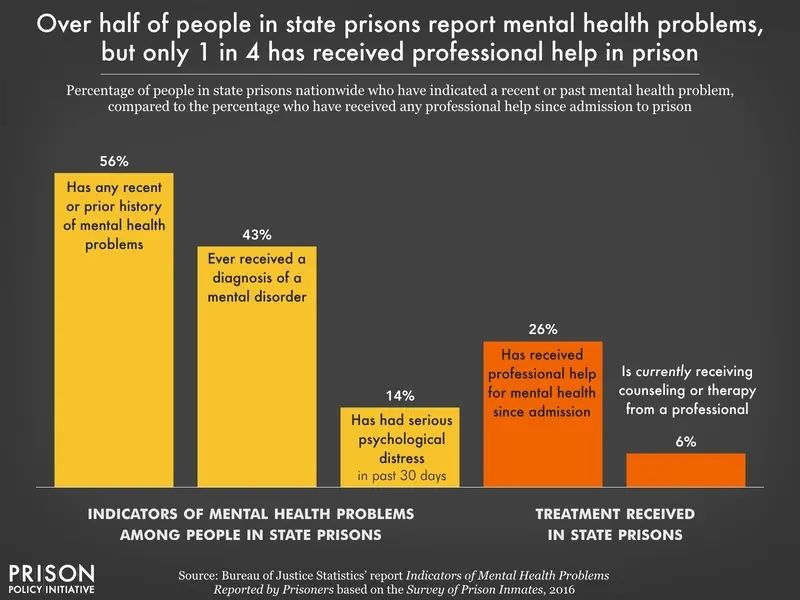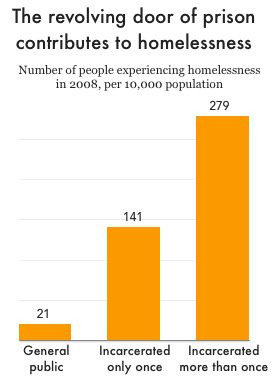Pres. Trump's executive order says it is about connecting unhoused people with treatment. Sounds good, right?
Well, the reality of it is, no surprise, much worse. 🧵
axios.com/2025/07/25/civ…
Well, the reality of it is, no surprise, much worse. 🧵
axios.com/2025/07/25/civ…
The measure aims to force unhoused people experiencing mental health or substance use issues into civil commitment facilities.
Defenders of these facilities claim they are treatment, not prisons, but there are far more similarities than differences:
prisonpolicy.org/blog/2023/05/1…
Defenders of these facilities claim they are treatment, not prisons, but there are far more similarities than differences:
prisonpolicy.org/blog/2023/05/1…
This would be a huge expansion of the civil commitment system in the United States!
The administration says it will only target people who can’t or won’t get treatment. But the administration is gutting the very services that provide that treatment.
The administration says it will only target people who can’t or won’t get treatment. But the administration is gutting the very services that provide that treatment.
Remember Trump's "big, beautiful bill"? It’s got an ugly reality: Steep cuts to Medicaid that hurt people who need it the most.
Being uninsured makes it nearly impossible to access mental health care or substance use treatment.
Being uninsured makes it nearly impossible to access mental health care or substance use treatment.
He's also slashed billions of dollars from addiction and mental health programs.
"In so many cases, these are life-saving programs and services, and we worry for the wellbeing of those who have come to count on this support."
npr.org/2025/03/27/nx-…
"In so many cases, these are life-saving programs and services, and we worry for the wellbeing of those who have come to count on this support."
npr.org/2025/03/27/nx-…
So while claiming to prioritize "safety," he is gutting the very programs that work. 🚩
Forcibly hospitalizing unhoused people does not get them the treatment & care they need. Especially now, when so many states are reeling from budget cuts.
Forcibly hospitalizing unhoused people does not get them the treatment & care they need. Especially now, when so many states are reeling from budget cuts.
With the safety net shredded, what will happen to these people?
In many cases, they’ll be put straight into actual prisons and jails – which are NEVER appropriate places for treatment.
In many cases, they’ll be put straight into actual prisons and jails – which are NEVER appropriate places for treatment.
➡️ More than half of people in state prison reported having a mental health problem, yet only 26% received professional help since entering prison.
➡️ Incarceration itself is traumatizing and can inflict serious mental damage on people.
prisonpolicy.org/reports/chroni…
➡️ Incarceration itself is traumatizing and can inflict serious mental damage on people.
prisonpolicy.org/reports/chroni…

People with substance abuse disorder are also already targeted–and failed–by the system.
Data shows that people who have been arrested or incarcerated are more likely to have substance use disorder, and jails in particular cannot provide the necessary care:

Data shows that people who have been arrested or incarcerated are more likely to have substance use disorder, and jails in particular cannot provide the necessary care:


And when people are shuffled into the system, they are more likely to be homeless.
Unfortunately, being homeless makes formerly incarcerated people more likely to be arrested & incarcerated again, creating a revolving door.
Unfortunately, being homeless makes formerly incarcerated people more likely to be arrested & incarcerated again, creating a revolving door.

The truth is that there's an inextricable link between housing, mental illness, drug use, and criminalization.
The solution is not forcibly hospitalizing people. It's housing.
The solution is not forcibly hospitalizing people. It's housing.

Housing First offers housing with no strings attached. It recognizes housing as the first step in responding to homelessness, rather than something to work toward.
prisonpolicy.org/blog/2023/09/1…
prisonpolicy.org/blog/2023/09/1…
Without being forced into treatment, unhoused people are given shelter and have agency over their healthcare.
Research shows that this approach keeps people housed and improves attitudes and outlook on life:
psychiatryonline.org/doi/full/10.11…
Research shows that this approach keeps people housed and improves attitudes and outlook on life:
psychiatryonline.org/doi/full/10.11…
Unsurprisingly, this executive order goes in the exact wrong direction by cracking down on Housing First programs.
Unfortunately, gutting proven solutions that make communities safer seems to be a pattern with the administration
prisonpolicy.org/federaltracker…
Unfortunately, gutting proven solutions that make communities safer seems to be a pattern with the administration
prisonpolicy.org/federaltracker…
This executive order is bad and misguided. It will result in far more people locked up simply because they’re experiencing homelessness, mental health crises, or substance use issues.
The good news is that state and local governments don’t have to help this misguided effort.
The good news is that state and local governments don’t have to help this misguided effort.
The federal government will certainly dangle $$$ to entice them to implement their policies, but they have the ability to say no. If the money comes with these types of strings attached, it isn’t worth the cost.
• • •
Missing some Tweet in this thread? You can try to
force a refresh









